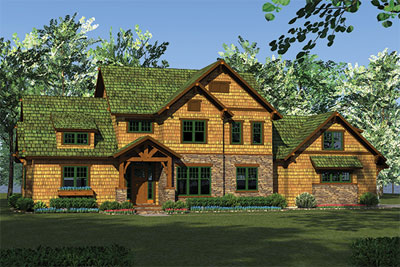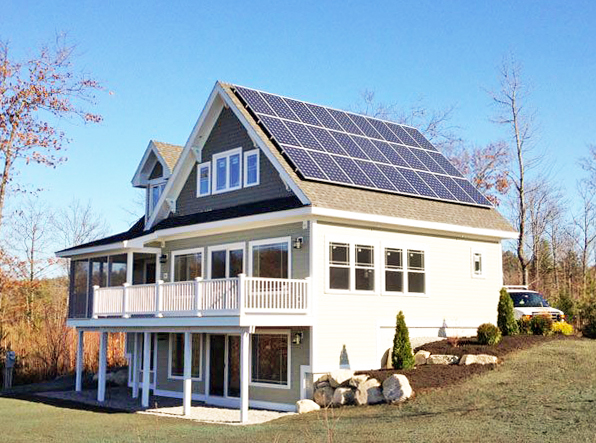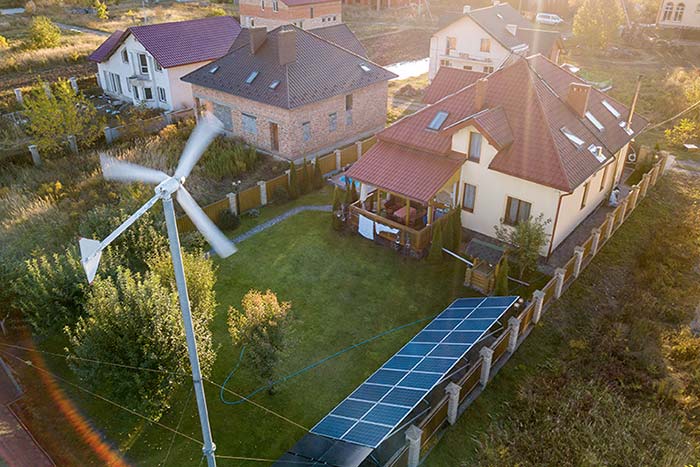
In today's increasingly eco-conscious world, creating an environmentally friendly home decor has become a priority for many homeowners.
To assist those seeking to make sustainable choices, this article presents the top 10 essentials for building an eco-friendly home decor.
From utilizing recycled materials and sustainable wood to incorporating non-toxic paints and natural fabrics, these practical and informative guidelines will help individuals create a space that not only promotes a greener lifestyle but also embraces a minimalist design aesthetic.
Recycled Materials
Recycled materials play a crucial role in creating an eco-friendly home decor by reducing waste and minimizing the environmental impact of construction.
One popular option for incorporating recycled materials is to use recycled glass. This can be done by repurposing glass bottles and jars into decorative items such as vases, candle holders, or even mosaic tiles. Not only does this give a second life to these glass items, but it also adds a unique and artistic touch to the home decor.
Another way to incorporate recycled materials is through repurposed furniture. This involves giving old furniture pieces a makeover by refinishing or reupholstering them. By doing so, not only do you save money, but you also prevent these items from ending up in landfills.
Sustainable Wood
To further enhance the eco-friendliness of your home decor, incorporating sustainable wood is a vital component. Sustainable wood refers to wood that is sourced from responsibly managed forests or reclaimed from old structures. It is a renewable resource that helps combat deforestation and reduces the demand for newly harvested timber.

When choosing sustainable wood for your home, opt for certified products like FSC (Forest Stewardship Council) or PEFC (Programme for the Endorsement of Forest Certification) certified wood. This ensures that the wood comes from forests that are managed in an environmentally and socially responsible manner.
Sustainable wood can be used for various purposes in your home decor, such as sustainable flooring, furniture, cabinetry, and even eco-friendly finishes. By incorporating sustainable wood into your home decor, you not only contribute to the preservation of forests but also create a healthier and more sustainable living environment.
Non-Toxic Paints
When it comes to choosing the right paint for your eco-friendly home decor, considering non-toxic options is crucial for both your health and the environment. Traditional paints often contain harmful chemicals like volatile organic compounds (VOCs) that can contribute to indoor air pollution and respiratory issues.
Health Benefits of Non-Toxic Paints
Using non-toxic paints in your home decor has numerous health benefits. Traditional paints often contain harmful chemicals, such as volatile organic compounds (VOCs), which can release toxins into the air and cause respiratory problems, allergies, and even long-term health issues.
Non-toxic paints, on the other hand, are made from natural ingredients and do not emit harmful fumes. They are free from VOCs, formaldehyde, and other toxins, making them a safer choice for your indoor air quality. Additionally, non-toxic paints are often made with natural dyes, which offer their own health benefits.
Natural dyes are derived from plants and other organic sources, and they do not contain synthetic chemicals that can be harmful to your health. Similarly, using organic textiles in your home decor can further enhance the health benefits by reducing exposure to synthetic materials and chemicals.
Organic textiles are made from natural fibers that are grown without the use of pesticides or other harmful chemicals, making them safer for your skin and overall well-being.

Environmental Impact of Traditional Paints
The environmental impact of traditional paints, in comparison to non-toxic paints, is significant and should not be overlooked. Traditional paints contain volatile organic compounds (VOCs) that contribute to air pollution and can have detrimental effects on human health. These VOCs are released into the air during the application and drying process of the paint, contributing to the formation of smog and greenhouse gases. Additionally, when traditional paints are disposed of, the chemicals can leach into the soil and water, further harming the environment.
To mitigate these environmental concerns, many countries have implemented strict environmental regulations on the production and use of traditional paints. These regulations aim to reduce the levels of VOCs and other harmful chemicals in paints, promoting the use of non-toxic alternatives.
Options for Eco-Friendly Alternatives
To address the environmental concerns surrounding traditional paints, it is important to explore the various options available for eco-friendly alternatives, specifically non-toxic paints. Non-toxic paints are made from natural ingredients and do not release harmful chemicals into the air, making them safe for both the environment and human health.
These paints are typically low in volatile organic compounds (VOCs), which are known to contribute to air pollution and respiratory issues. When choosing non-toxic paints, look for labels that indicate low or zero VOC content.
Additionally, consider using eco-friendly lighting options, such as LED bulbs, which are energy-efficient and have a longer lifespan. Sustainable home accessories, made from recycled or renewable materials, are also a great way to enhance the eco-friendliness of your home decor.
Natural Fabrics
Natural fabrics are a crucial element of eco-friendly home decor. By opting for sustainable fabric options such as organic cotton, hemp, and linen, you can reduce the environmental impact of your home.
These natural fibers offer several benefits, including breathability, durability, and biodegradability, making them a practical and responsible choice for your home decor.

Sustainable Fabric Options
Sustainable fabric options, such as organic cotton and hemp, are essential for creating an eco-friendly home decor.
When it comes to sustainable fabric dyeing, opting for natural dyes made from plants and minerals can minimize the environmental impact. These dyes are not only free from harmful chemicals but also biodegradable, ensuring that they do not contribute to pollution.
Additionally, choosing eco-friendly upholstery options is another important aspect of sustainable fabric choices. Materials such as jute, linen, and bamboo are not only sustainable but also durable and versatile. They can be used for upholstery, curtains, and other decorative elements in your home.
Benefits of Natural Fibers
Using natural fibers in home decor offers numerous benefits. Natural fabrics, such as cotton, linen, wool, and silk, are known for their strength and longevity. These materials are less likely to tear or wear out quickly, making them ideal for upholstery, curtains, and rugs that withstand daily use.
Additionally, natural fibers are biodegradable, meaning they break down easily without releasing harmful toxins into the environment. This reduces the overall environmental impact of your home decor choices.
Furthermore, natural fabrics can have health benefits. They are breathable and hypoallergenic, making them suitable for individuals with sensitive skin or allergies. By choosing natural fibers for your home decor, you not only create a sustainable space but also prioritize the well-being of your family.
Second-Hand Furniture
When considering the creation of an eco-friendly home decor, incorporating second-hand furniture is a cost-effective and environmentally conscious option. Second-hand furniture refers to pre-owned items that have been previously used by someone else.

By choosing second-hand furniture, you are reducing the demand for new furniture production, which has a significant environmental impact. Additionally, purchasing second-hand furniture allows you to save money and give old pieces a new life.
To further enhance the sustainability of your second-hand furniture, you can employ upcycling techniques. Upcycling involves transforming old or discarded items into something new and useful. You can repaint, reupholster, or repurpose the furniture to fit your personal style and needs.
Embracing second-hand furniture and upcycling techniques not only contributes to a greener lifestyle but also adds character and uniqueness to your home decor.
Homemade Decorations
When it comes to building an eco-friendly home decor, homemade decorations can play a crucial role. Not only are they budget-friendly DIY crafts, but they also allow you to incorporate sustainable materials into your design.
Upcycling old household items is another great way to reduce waste and give new life to objects that would otherwise end up in a landfill.
Budget-Friendly DIY Crafts
Creating homemade decorations is an economical and sustainable way to enhance your eco-friendly home decor. By utilizing budget-friendly upcycling techniques and embracing minimalist design principles, you can transform everyday items into unique and stylish decorations.
Here are three DIY craft ideas to get you started:

- Mason jar lanterns: Repurpose empty mason jars by turning them into beautiful lanterns. Simply clean the jars, place a candle or LED light inside, and hang them around your home or garden. This simple craft adds a cozy and rustic touch to your eco-friendly decor.
- Newspaper wall art: Give old newspapers a new lease on life by turning them into wall art. Cut out interesting headlines or images, arrange them in a pleasing pattern, and frame them. This inexpensive and creative decoration adds a touch of personality and uniqueness to your space.
- Repurposed pallet shelves: Upcycle wooden pallets into functional and decorative shelves. Sand down the pallets, paint or stain them in your desired color, and mount them on the wall. These rustic shelves provide a minimalist storage solution while adding a charming and eco-friendly element to your home decor.
With these budget-friendly DIY crafts, you can create homemade decorations that not only enhance your eco-friendly home decor but also showcase your creativity and commitment to a sustainable lifestyle.
Sustainable Materials for DIY
To create sustainable and eco-friendly homemade decorations, it is essential to utilize materials that are environmentally friendly and ethically sourced. Opting for eco-friendly home accents not only helps reduce waste but also promotes a healthier environment.
When embarking on sustainable DIY projects, it is important to consider the impact of the materials used. One of the most sustainable materials for DIY decorations is reclaimed wood, which can be repurposed into beautiful and unique pieces.
Another option is to use natural fabrics like organic cotton or hemp for cushion covers or curtains. Recycled glass can be transformed into stunning vases or candle holders, adding a touch of elegance to any room.
Additionally, natural dyes made from plants or food waste can be used to create vibrant and eco-friendly colors for fabric or paper crafts.
Upcycling Old Household Items
One way to incorporate eco-friendly practices into your home decor is by upcycling old household items. Upcycling refers to the process of creatively repurposing items that would otherwise be discarded, giving them a new lease on life. This not only reduces waste but also adds a unique and personal touch to your home.
Here are three upcycling techniques you can use to create homemade decorations:

- Turn old mason jars into stylish candle holders by painting them in vibrant colors and adding decorative elements such as ribbons or beads.
- Transform discarded wooden pallets into rustic wall shelves by sanding them down, painting or staining them, and attaching brackets for hanging.
- Repurpose old wine bottles as elegant vases by removing the labels, adding a fresh coat of paint, and arranging beautiful flowers or greenery inside.
Minimalist Design
The incorporation of minimalism is crucial for achieving an eco-friendly home decor. Minimalist design focuses on simplicity and functionality, making it a perfect choice for those who aspire to live a minimalist lifestyle and embrace an eco-conscious mindset. By adopting minimalist living principles, you can reduce clutter, make more conscious choices about the items you bring into your home, and create a space that is both aesthetically pleasing and environmentally friendly.
Emphasize clean lines, neutral colors, and natural materials in your decor choices. Opt for multifunctional furniture pieces that serve multiple purposes, eliminating the need for excess items. Remember, less is more when it comes to minimalism, and by incorporating this design philosophy into your home, you can create a space that reflects your values and promotes a sustainable way of living.
Indoor Plants
Incorporating a variety of indoor plants is essential for creating an eco-friendly home decor that promotes air purification and a connection to nature. Indoor plants offer numerous benefits, including improving air quality by removing toxins and releasing oxygen. They also add a touch of greenery and beauty to your living space, creating a calming and soothing atmosphere.
Here are three tips for caring for indoor plants:
- Choose the right plants: Select plants that thrive in indoor conditions and require minimal care. Some popular indoor plants include the snake plant, pothos, and spider plant.
- Provide adequate lighting and water: Indoor plants need the right balance of light and water to thrive. Place them near windows where they can receive sufficient sunlight, and water them regularly, ensuring the soil is moist but not waterlogged.
- Regular maintenance: Keep an eye on your indoor plants for signs of pests or disease. Trim dead leaves and branches, and fertilize them occasionally to promote healthy growth.
LED Lighting
Continuing the focus on creating an eco-friendly home decor, let's delve into the importance of incorporating LED lighting.
LED lighting, or Light Emitting Diode, is a highly energy-efficient lighting option that has gained popularity in recent years. LED lights are designed to consume less energy than traditional incandescent bulbs, making them an ideal choice for reducing energy consumption and lowering electricity bills. Additionally, LED lights have a longer lifespan, which means fewer replacements are needed, reducing waste.
LED lighting can be used in various areas of the home, including the kitchen, living room, and even outdoor spaces. By replacing traditional light bulbs with LED lights, homeowners can significantly reduce their carbon footprint and contribute to a more sustainable environment.

When building an eco-friendly home decor, incorporating LED lighting is a practical and efficient choice.
Energy-Efficient Appliances
To ensure optimal energy efficiency in your eco-friendly home decor, it is crucial to prioritize the use of energy-efficient appliances. Investing in these appliances not only helps reduce your carbon footprint but also brings several health benefits and long-term cost savings. Here are three key reasons why energy-efficient appliances are essential for your eco-friendly home:
- Health Benefits: Energy-efficient appliances are designed to consume less energy, which means they produce fewer greenhouse gas emissions. This helps improve the air quality in your home, reducing the risk of respiratory issues and allergies caused by pollutants.
- Long-Term Cost Savings: Although energy-efficient appliances may have a higher upfront cost, they offer significant long-term savings. These appliances use less electricity, resulting in lower utility bills and reducing your overall energy expenses.
- Environmental Impact: By using energy-efficient appliances, you contribute to the conservation of natural resources and help combat climate change. These appliances consume less energy, reducing the demand for fossil fuels and minimizing greenhouse gas emissions.
Frequently Asked Questions
Are Recycled Materials as Durable as Non-Recycled Materials?
Recycled materials can be as durable as non-recycled materials, depending on their composition and manufacturing process. Using recycled materials in home decor offers several benefits, including reducing waste and conserving resources while still maintaining quality and durability.
How Can I Ensure That the Sustainable Wood I Choose for My Home Decor Is Ethically Sourced?
When choosing sustainable wood for home decor, it is important to ensure that it is ethically sourced. Look for ethical certifications, such as FSC or PEFC, and inquire about the supplier's sustainable forestry practices.
Are Non-Toxic Paints More Expensive Than Regular Paints?
Non-toxic paints may have a slightly higher upfront cost compared to regular paints, but the long-term health benefits and reduced environmental impact make them an affordable and responsible choice for eco-friendly home decor.
What Are Some Natural Fabrics That Are Commonly Used in Eco-Friendly Home Decor?
Natural fabrics commonly used in eco-friendly home decor include organic cotton, hemp, linen, and bamboo. These fabrics are biodegradable and have a low environmental impact. They can be dyed using eco-friendly dyes, further enhancing their sustainability.
How Can I Make Sure That Second-Hand Furniture Is Clean and in Good Condition Before Purchasing It for My Home?
Before purchasing second-hand furniture for your home, ensure it is clean and in good condition by using appropriate cleaning techniques and buying from reputable sellers. This ensures a safe and eco-friendly addition to your eco-friendly home decor.

 Family Craft ProjectsHome ImprovementCooking and BakingReuse and RecycleDIY GiftsEco-Friendly ProjectsDIY Home SolutionsSeasonal ActivitiesFun and GamesLearn TogetherPrivacy PolicyTerms And Conditions
Family Craft ProjectsHome ImprovementCooking and BakingReuse and RecycleDIY GiftsEco-Friendly ProjectsDIY Home SolutionsSeasonal ActivitiesFun and GamesLearn TogetherPrivacy PolicyTerms And Conditions
